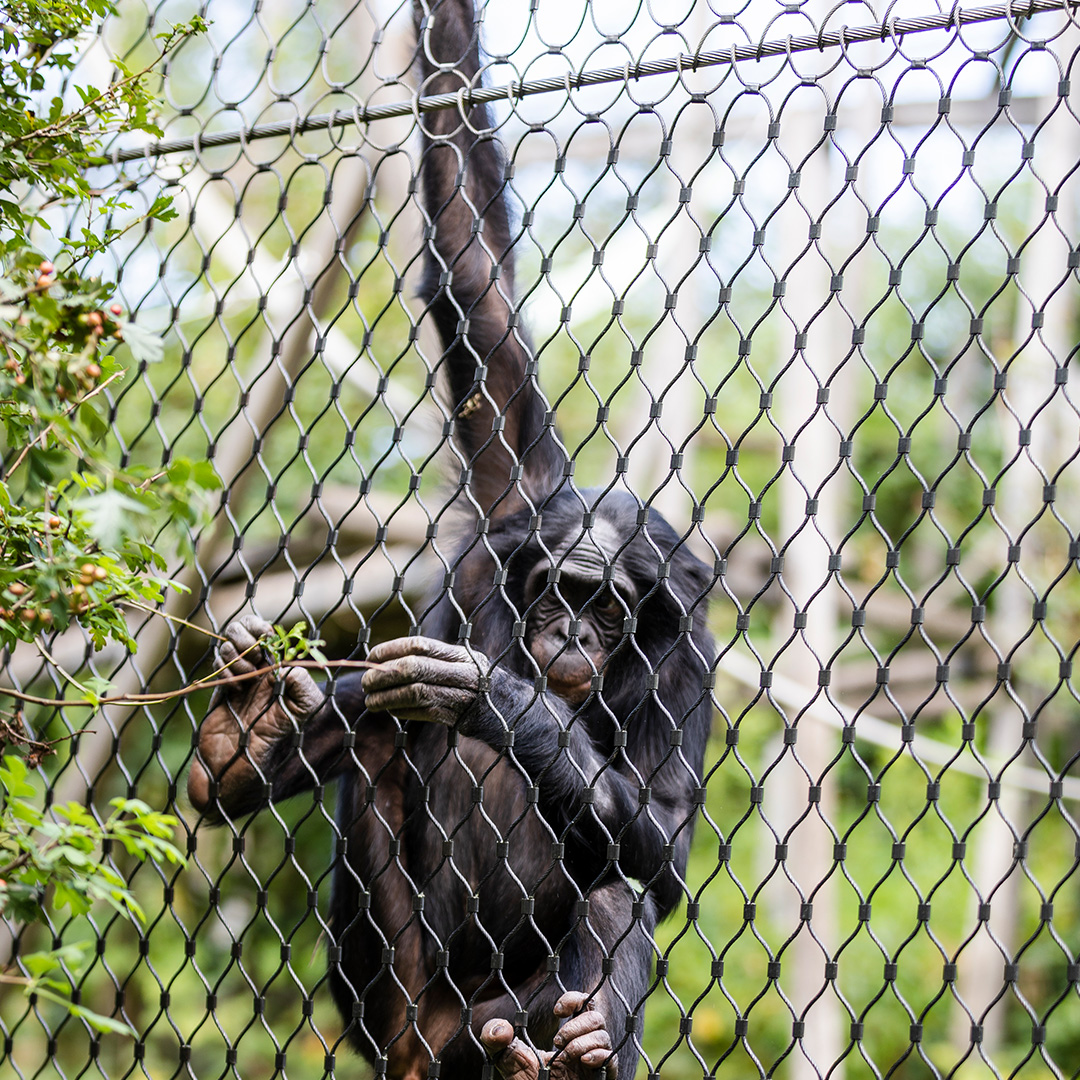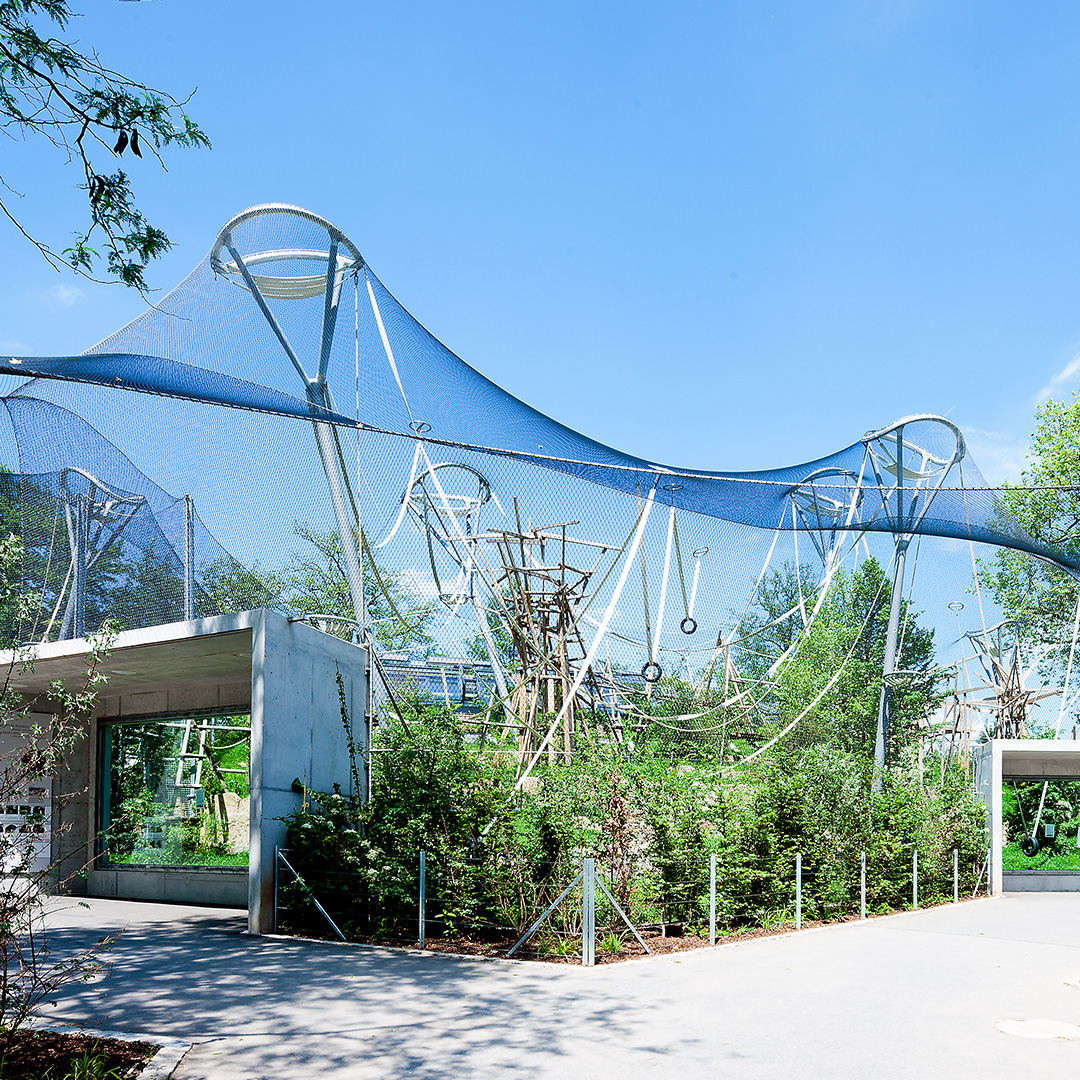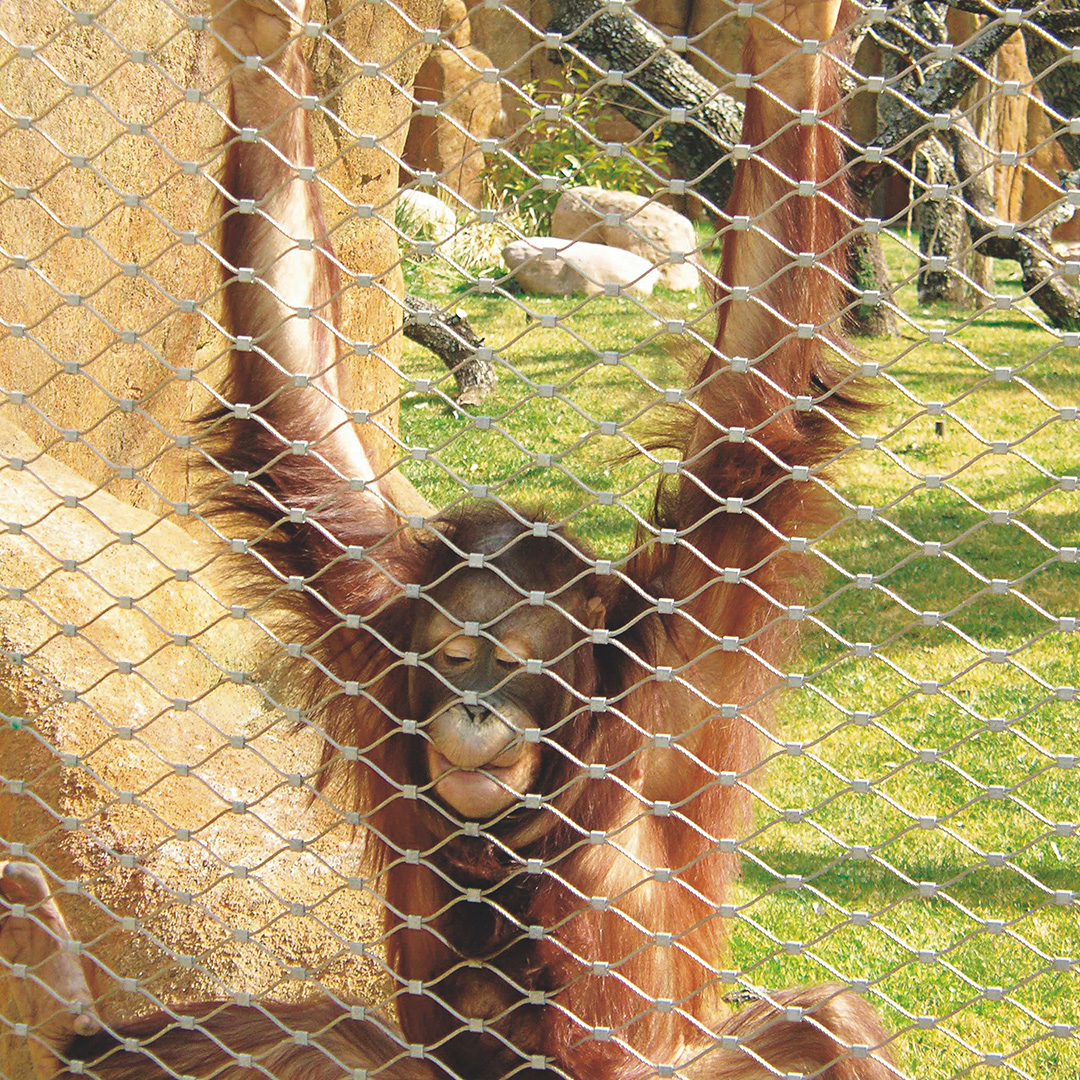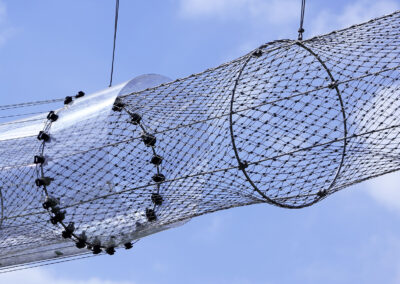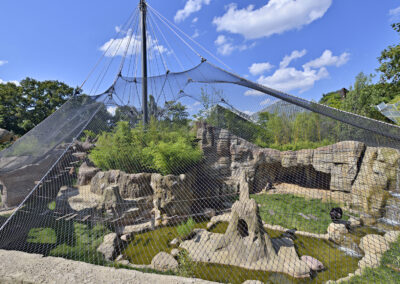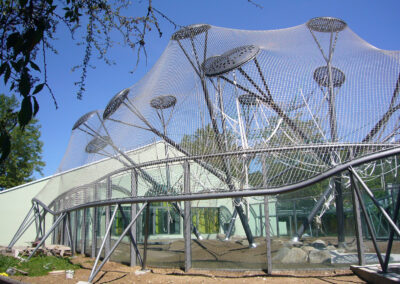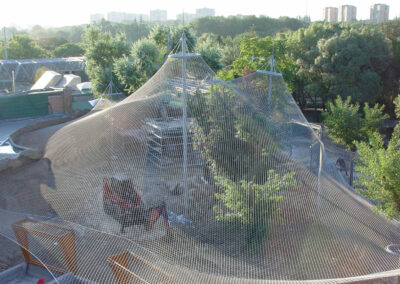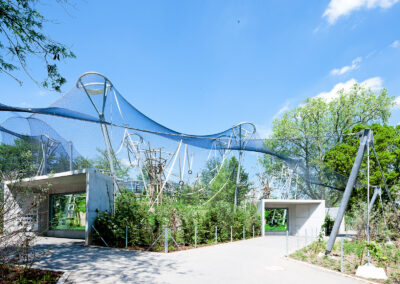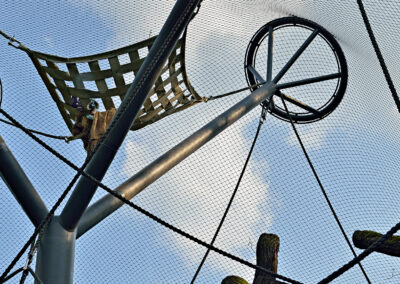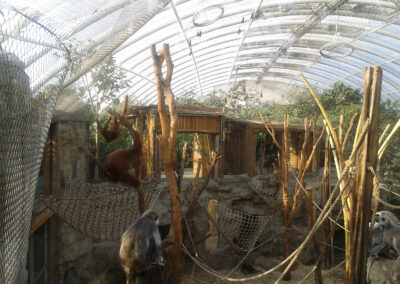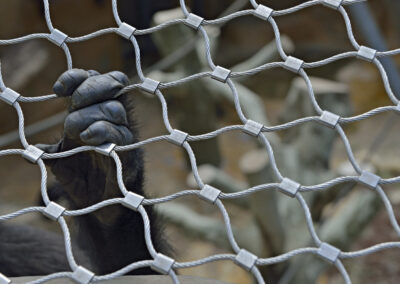GENEROUS MOVEMENT SPACES
The three-dimensionally shapeable, flexible X-TEND stainless steel mesh permits large spanning widths enabling the creation of spacious areas in which the primates can move freely – importantly up and down, too. It serves as a climbing frame for the animals, with which they can get right up to the mesh roof.
The extended activity scope to heights of over 15 meters promotes the natural species-typical behavior of the primates and they can jump and swing around the enclosure in all directions. The required ropes, swings, hammocks, walking beams, manipulable objects and interesting haptical materials can be integrated into the structure respectively simply connected to it.
FREEDOM FOR ANIMAL ACROBATS
The majority of apes and monkeys are tree dwellers. A variety of climbing facilities – both horizontal and vertical –
is essential if they are to be kept in zoos under appropriate conditions. Sufficient room to exercise
is a top priority no matter whether their enclosures are indoors or outdoors.
The rope diameters and mesh sizes as well as the supporting and shaping elements, the guy wires and fastening methods can be designed as needed. The high demands of day-to-day working are taken into account: integrated inspection manholes, sliding gates, trees and plants, climbing areas and places to sleep as well as entries and exits for the zookeepers.
NATURALLY DESIGNED FOR SPECIES-APPROPRIATE HUSBANDRY
Vertically positioned and hardly perceptible mesh panels allow individual sections of the enclosure to be flexibly separated or connected in accordance with the needs and social behavior of the respective species.
In addition, escape and quarantine quarters can be created as well as retreat rooms and a separate area for the offspring. This allows the young animals to be hand-reared safely,
but without losing the closeness to the family, thus preparing them for later life in the group
